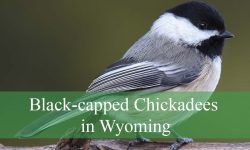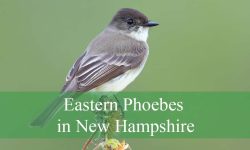Carolina wrens bring striking energy to Delaware’s neighborhoods, their ringing calls carrying through backyards, porches, and wooded corners. Their upright tails, quick movements, and confident posture give them a presence far larger than their small size would suggest. Although many residents hear their ringing “tea-kettle, tea-kettle, tea-kettle” song year round, few realize how complex these birds’ behavior truly is behind the scenes.
Delaware’s mild winters, dense shrubbery, river corridors, and suburban structures offer ideal habitat for Carolina wrens. Their ability to adapt to human environments makes them one of the state’s most reliable backyard birds. Even when snow arrives, wrens remain active, searching for insects among leaf litter, hidden logs, and sheltered corners. Their year-round residency reveals a combination of resilience and curiosity unique among small songbirds.
This article uncovers hidden facts about Carolina wrens in Delaware neighborhoods, exploring their feeding strategies, nesting habits, territorial behavior, seasonal rhythms, and ecological roles that most people never notice.
Understanding Carolina Wrens in Delaware

What Carolina Wrens Really Are
Carolina wrens are small, warm-colored birds with cinnamon-brown plumage, bold white eye stripes, and long, slightly curved bills. They display upright tails that flick with excitement whenever they forage or communicate. Their voices are surprisingly powerful for their size, with males capable of projecting songs that carry across large suburban blocks.
Their behavior combines alertness with curiosity. Carolina wrens frequently explore porches, garages, mailboxes, and sheds with fearless energy. Their tendency to inspect every crevice helps them locate food and nesting sites, making them exceptionally adaptable to Delaware’s varied residential landscapes.
Why Delaware Provides Ideal Habitat
Delaware’s environmental conditions suit Carolina wrens perfectly. Mild winters and abundant shrubs create sheltered foraging areas throughout the cold months. Neighborhoods with woodpiles, decks, gardens, and hedgerows mimic the dense understory of natural forests where wrens prefer to hunt insects.
Insects remain available longer into autumn than in colder northern states, helping wrens maintain enough food before winter. Delaware also provides rich microhabitats along rivers, marsh edges, and coastal forests. These environments produce insect-rich leaf litter that wrens rely on for year-round feeding.
Where They Are Found Across the State
Carolina wrens occur throughout Delaware, from suburban Wilmington to rural Sussex County. They thrive in backyards, local parks, river trails, forest edges, and old neighborhoods filled with mature trees. Their presence near homes often gives residents an intimate look at this species’ intricate behaviors.
Hidden Behaviors You Probably Haven’t Noticed
Their Curiosity Drives Survival
Carolina wrens appear to investigate everything in their environment. They hop onto porch railings, peek into flowerpots, slip beneath decks, and examine woodpiles with remarkable enthusiasm. This behavior is not random. It is an essential survival strategy that helps wrens locate insects during difficult seasons and identify suitable nesting cavities. Their constant exploration explains why they remain common even during harsh Delaware winters.
They Sing Loudly Even in Cold Weather
Unlike many songbirds that quiet down during winter, Carolina wrens continue singing year round. Their songs reinforce territory boundaries and strengthen pair bonds, especially when food is scarce. In Delaware neighborhoods, their song often becomes one of the few consistent natural sounds during winter, echoing across frosty lawns and leafless branches.
They Form Long-Term Pair Bonds
Carolina wrens maintain strong pair bonds that last throughout the year. Males and females travel together, forage near one another, and communicate frequently. Their cooperation increases their ability to locate food and defend nesting sites. This partnership is particularly beneficial in Delaware’s winter months when wrens rely on teamwork to find insects beneath snow or frozen leaves.
Anatomy That Helps Them Thrive in Delaware
A Bill Designed for Probing
Their slender, slightly curved bill lets them probe deep into bark, crevices, and leaf piles. This shape allows them to extract spiders, beetles, larvae, and other hidden prey that remain active during cooler months. Their foraging success depends on their ability to search where other species cannot reach.
Strong Legs for Maneuverable Foraging
Carolina wrens have sturdy legs that allow them to climb vertical surfaces, cling to siding, and balance on narrow ledges. Their agility helps them access food in hard-to-reach corners of sheds, fences, logs, and porches.
Plumage That Provides Winter Insulation
Although they are small, their feathers trap heat efficiently. Fluffing their plumage creates insulating pockets of air that help them withstand cold snaps. Delaware’s relatively mild climate reduces the risk of severe mortality events, allowing populations to remain stable.
Feeding Habits in Delaware Neighborhoods
Insect Hunters at Heart
Carolina wrens feed primarily on insects, spiders, and other small invertebrates. They search under logs, inside garages, beneath porch steps, and around firewood piles. Delaware’s humid climate supports healthy insect populations, even in winter microhabitats such as compost bins and sheltered garden beds.
Seasonal Shifts in Diet
During winter, wrens supplement their diet with seeds, suet, berries, and leftover fruit. Backyard feeders become essential in harsh weather, especially in northern Delaware where temperatures occasionally dip below freezing. Their flexibility helps them survive periods of low insect availability.
Foraging in Human Spaces
Carolina wrens are experts at using human areas for food. They inspect shed corners, porch crevices, deck railings, and cluttered garages to locate spiders and insect eggs. Their foraging style blends curiosity with precision, allowing them to discover food sources that other birds overlook.
Nesting and Breeding Behavior
Choosing Nesting Sites
Carolina wrens are creative nest builders. They select natural cavities such as tree hollows, but in Delaware neighborhoods they often choose mailboxes, hanging baskets, light fixtures, and tool shelves. Their selection depends on shelter, concealment, and proximity to dense shrubs.
Building the Nest
Males and females both contribute to nest building. They gather twigs, leaves, moss, bark, and even human materials such as cloth scraps or paper. The interior is lined with feathers and soft fibers, creating a warm chamber for eggs. Their nests can appear in surprising places, making them a common backyard sight for Delaware homeowners.
Raising Young
Wrens typically raise two broods per season. The parents alternate feeding duties, bringing insects to chicks every few minutes. Once fledged, young birds remain nearby as they learn to forage effectively. Delaware’s abundance of summer insects supports high chick growth rates.
Carolina Wrens Across Delaware Landscapes
Suburban and Urban Neighborhoods
Suburban areas offer the perfect combination of shrubs, porches, woodpiles, and sheltered microhabitats. Wrens reliably use these environments for nesting, foraging, and winter survival. Neighborhoods with older homes and mature vegetation support some of the densest populations in the state.
Forest Edges and Woodlots
Tree-lined edges and small wooded patches in Delaware provide abundant insects and natural cavities. Wrens move easily between backyards and nearby forest fragments, creating dynamic territories that span multiple habitat types.
Coastal and River Corridors
Riparian corridors such as the Brandywine, Christina River, and Delaware Bay wetlands host rich insect life. These areas attract wrens looking for food year round. Dense vegetation along banks offers roosting cover and reliable foraging grounds.
Rural Properties and Farms
Barns, sheds, fences, and overgrown hedgerows create ideal wrenscape conditions. Many rural Delaware properties host long-standing wren pairs that reuse general nesting sites each year.
Seasonal Rhythms in Delaware
Early Spring Activity
Wrens become highly vocal in early spring as pairs reaffirm territories. Insects emerge in leaf litter, giving wrens new feeding opportunities after winter scarcity.
Summer Breeding
Warm months bring abundant prey, making summer the peak season for chick rearing. Wrens use sheltered yard corners and shed interiors as nesting locations.
Autumn Movements
As temperatures cool, wrens begin expanding their foraging range. They search for hidden winter food sources and establish access to consistent microhabitats.
Winter Survival
Carolina wrens remain year round in Delaware. They rely on sheltered vegetation, warm microclimates, and backyard feeders to endure cold spells. Their resilience helps them maintain stable populations even during snow-covered periods.
Interaction With Other Wildlife
Birds
Wrens coexist with sparrows, cardinals, finches, robins, and titmice. Their foraging style reduces competition because they search in places other species ignore. They may chase intruders from nests but rarely engage in prolonged conflicts.
Mammals
Raccoons, squirrels, and mice sometimes disturb nesting sites. Wrens counter this by selecting concealed or elevated cavities.
Insects
Wrens play a major role in controlling spiders, beetles, ants, and moth larvae across Delaware neighborhoods. Their constant probing helps maintain ecological balance.
Myths and Misconceptions
Myth: Carolina Wrens Only Live in Forests
They thrive in yards, garages, porches, and urban parks just as well as natural woodlands.
Myth: Winter Wipes Out Their Populations
While severe cold can affect numbers, Delaware’s climate usually remains mild enough to support strong year round residency.
Myth: They Are Shy or Secretive
Wrens are bold and active. Their frequent visits to porches and sheds prove they coexist comfortably with humans.
Ecological Importance
Natural Pest Control
Wrens consume countless insects daily, helping reduce pest populations in gardens, parks, and wooded neighborhoods.
Stability in Backyard Bird Communities
As year round residents, wrens contribute to the soundscape and ecosystem structure of Delaware neighborhoods even during winter.
Indicators of Habitat Quality
Healthy wren populations reflect strong insect availability, protective vegetation, and presence of cavity shelters.
FAQs About Carolina Wrens in Delaware
Are Carolina wrens common in Delaware?
Yes. They are abundant year round residents across neighborhoods, parks, and river corridors.
What do they eat?
Insects, spiders, berries, and occasionally seeds—especially during winter.
Do they migrate?
No. Wrens remain in Delaware year round.
Where do they build nests?
In natural cavities and human structures such as mailboxes, flowerpots, sheds, and porch beams.
How loud are their songs?
Very loud for their size. Their calls can be heard across entire neighborhoods.
Do they return to the same nesting area?
Often yes. Many pairs reuse the same general structure or yard each year.
Conclusion
Carolina wrens in Delaware neighborhoods display a blend of adaptability, curiosity, and resilience that makes them far more remarkable than their small size suggests. Their hidden behaviors, strong pair bonds, year round singing, and creative nesting habits reveal a species deeply intertwined with Delaware’s human and natural landscapes. Understanding their habits enhances our appreciation for these energetic backyard residents that fill neighborhoods with life.






